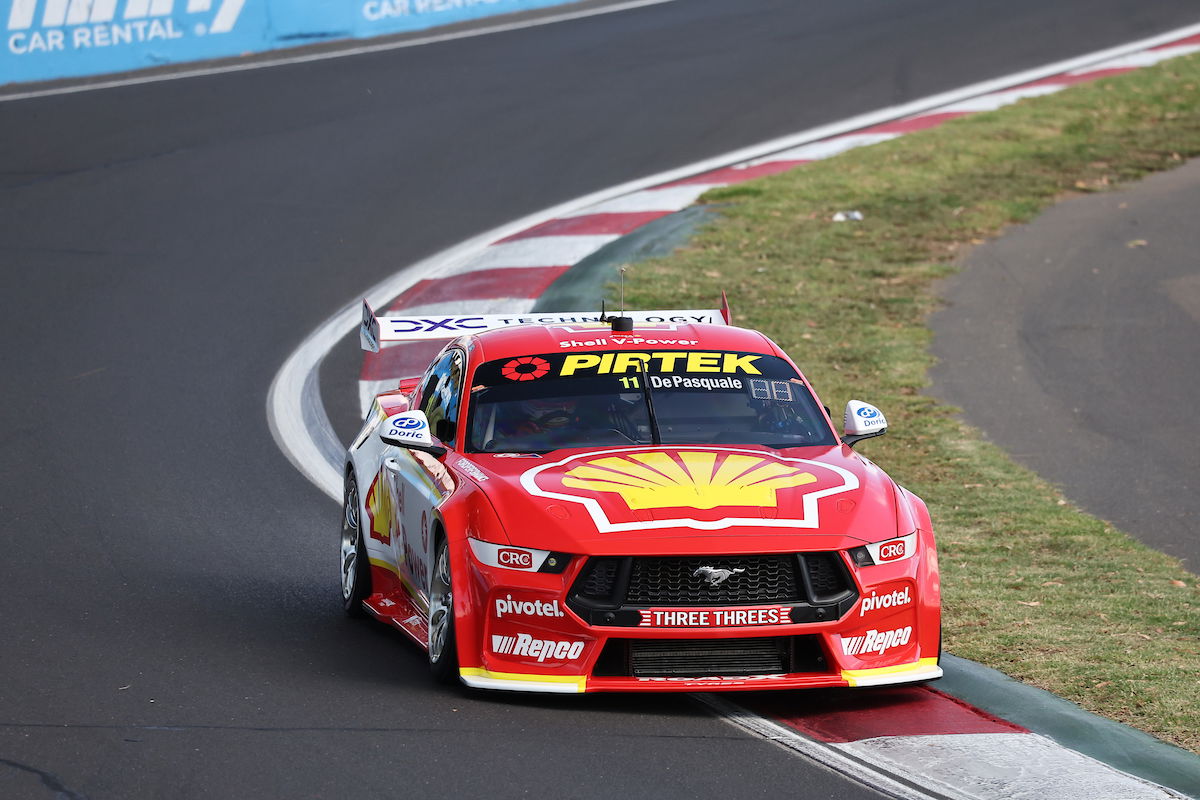

A Chevrolet Camaro and a Ford Mustang from the respective homologation teams, Triple Eight Race Engineering and Dick Johnson Racing, was sent to the venue of the season-opener, Mount Panorama, a week early.
In what was originally billed primarily as ‘demonstration’ sessions, both cars ran with torque sensors for engine data collection and a number of other tools which Edwards disclosed in a video published via Supercars’ social media channels, including the pitot tubes spotted by Speedcafe.
“It’s not all about aero,” he said.
“We’re doing engine assessment as well at the moment, so we’re actually monitoring both things and that’s why we’ve got different tools on the car that are actually measuring different parameters.
“But, it’s the straight-line performance we’re focusing on at the moment, which is aero- and engine-related.
“Our intention is to run more sensors on more cars, more of the time, because that’s the only way that we can make an educated assessment of where the technical parity lies between the two cars.”
In addition to the already announced torque sensors and the pitot tubes, the #87 Camaro and #11 Mustang were running laser ride height sensors and g sensors.
“This weekend, we’ve got the torque sensors in; there’s been a bit of talk about that,” Edwards noted.
“We’ve also got a pitot sensor on the car, which hangs out of the roof; that’s for our aero assessment.
“We’ve got laser ride height sensors in the car because that obviously influences the acceleration and all the other things in the car, and we’ve also got a high-resolution g sensor in the car.
“We’ve got a big, long list of other sensors that we’re going to roll out during the year to capture a lot more information but, this weekend, those are the four things that we’ve got on the car, in addition to the sensors that are already on the car.”
As reported by Speedcafe, Supercars has signed off on aerodynamic parity between the two cars, following two rounds of wind tunnel testing at the Windshear facility in North Carolina.
Edwards emphasised that there will be no let-up in technical parity monitoring, which is set to encompass transient dynamometer testing at some point in coming months, once engine specifications have been locked in.
“We’ve done a heap of work over the last few months,” he stated.
“Everybody knows we’ve been to Windshear, we’ve been doing dyno tests, we’ve been doing track testing with torque sensors, and this is just another step in that process, and something you’ll see us do all season.
“This is an extension of what we started in December at Windshear, but this will never end,” he added.
“We’re going to constantly monitor the technical performance of the car, we want to be constantly assessing that after every race event, after every weekend, we’ll be assessing it, and the more information we’ve got – we’ve got all these additional sensors – the better armed we are to make a proper technical assessment.”
Broc Feeney drove the Camaro and Anton De Pasquale piloted the Mustang, although they ran on soft compound tyres rather than the hards which will be used next weekend, and with a Supercars-determined set-up.



















Discussion about this post